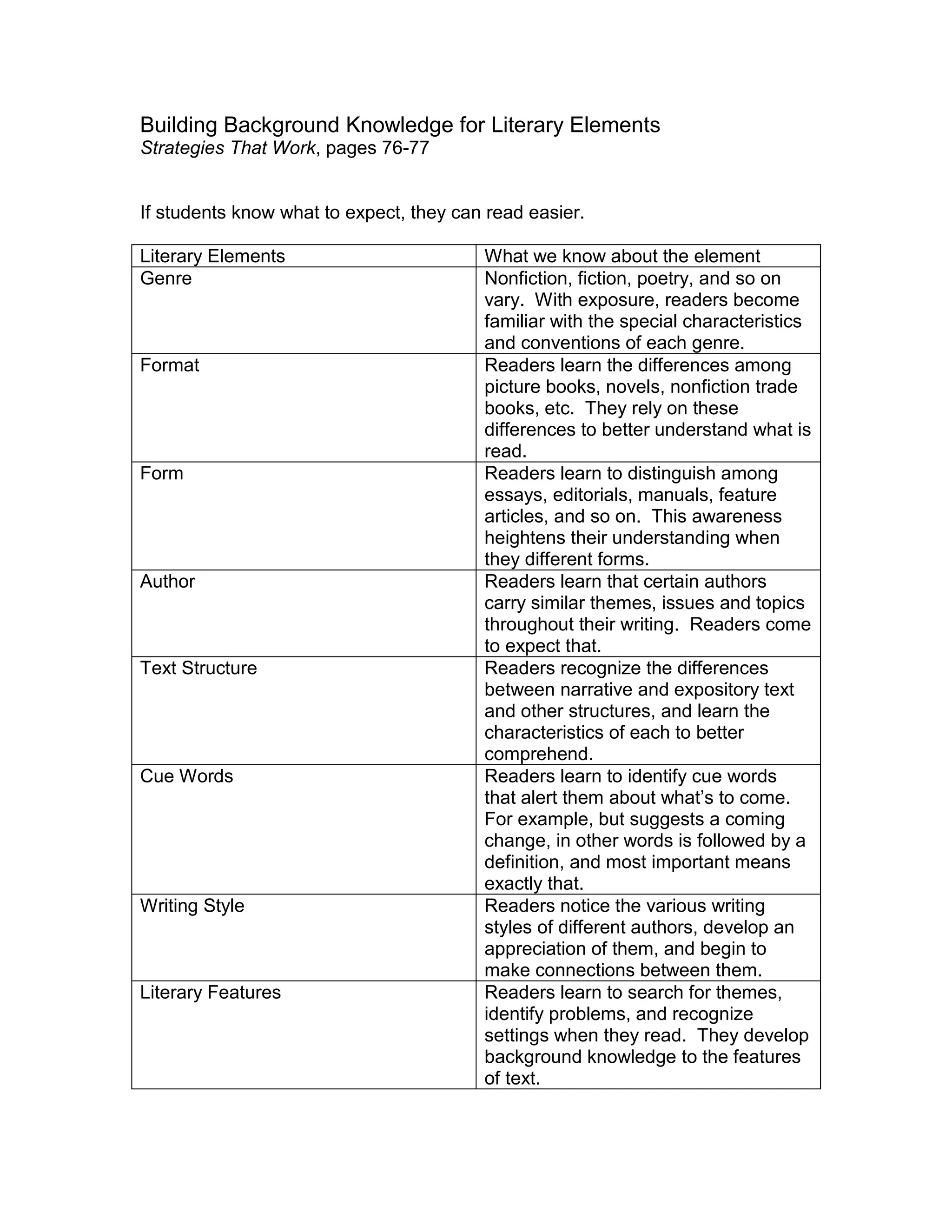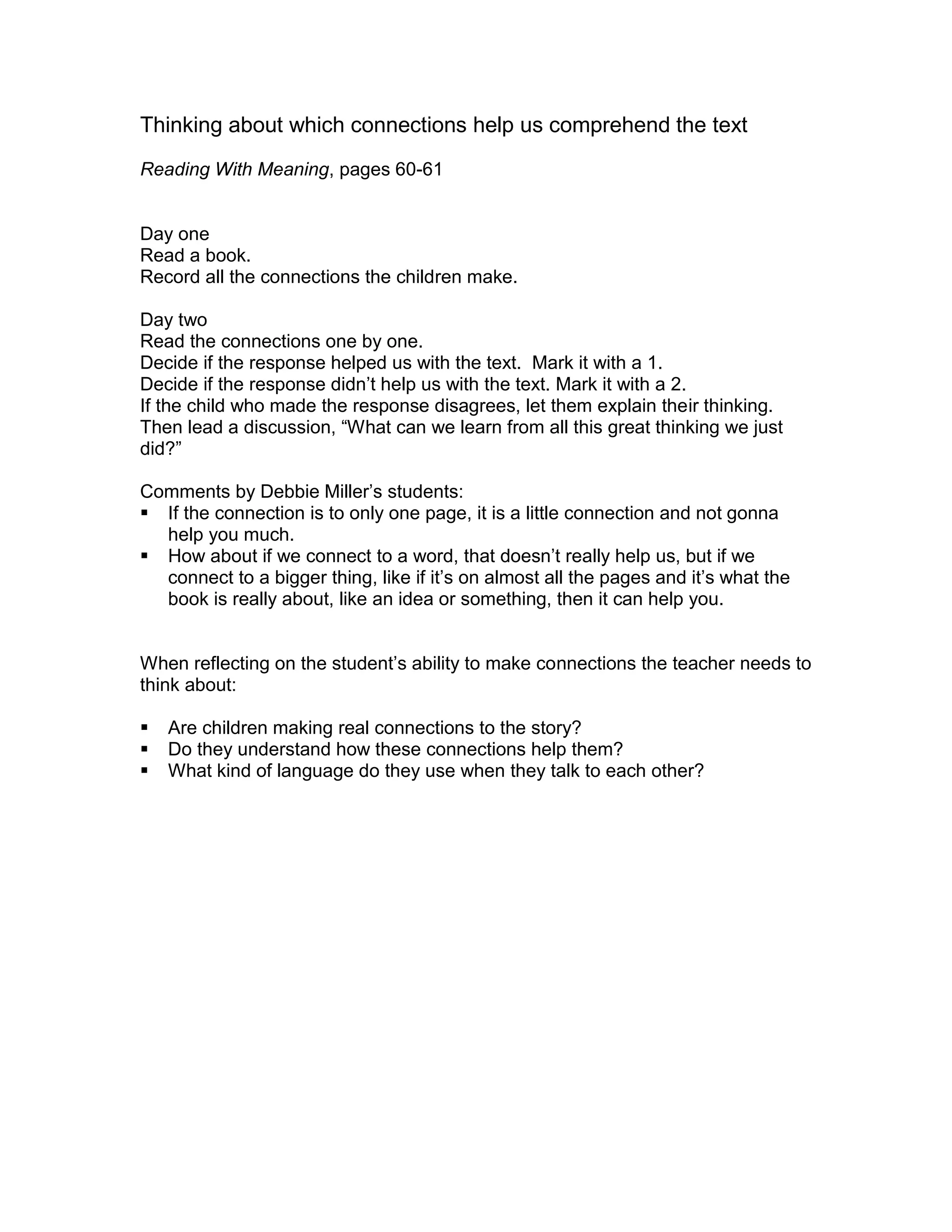This document provides information and strategies for teachers to help students activate and build on their background knowledge or schema when reading. It discusses the importance of making connections between what students already know and new information in a text. There are three types of connections: text to self, text to text, and text to world. Strategies described include think-alouds, talking drawings, and filling in charts to help students summarize what they read and make connections to their own lives and experiences. The goal is for students to understand how making connections can deepen their comprehension of what they read.
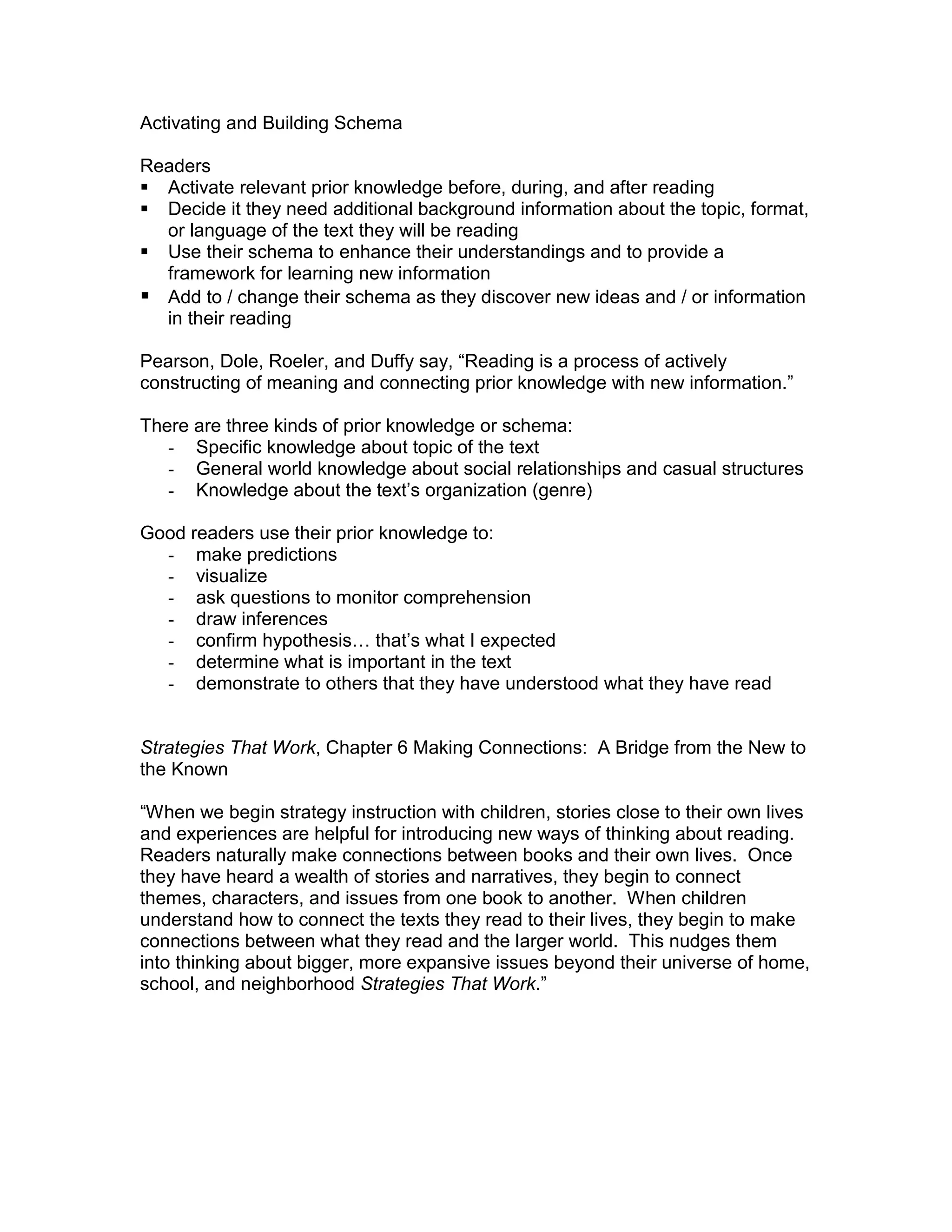
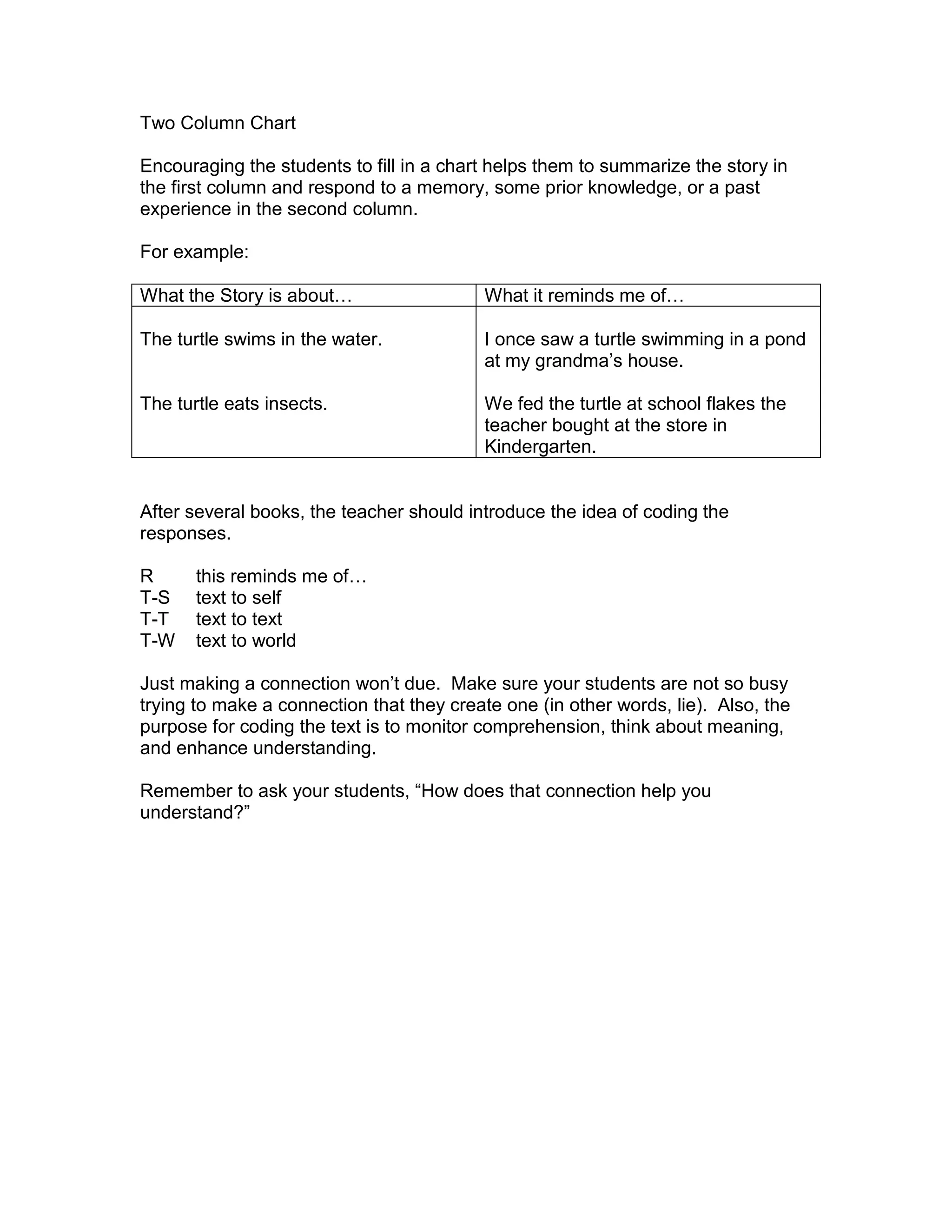
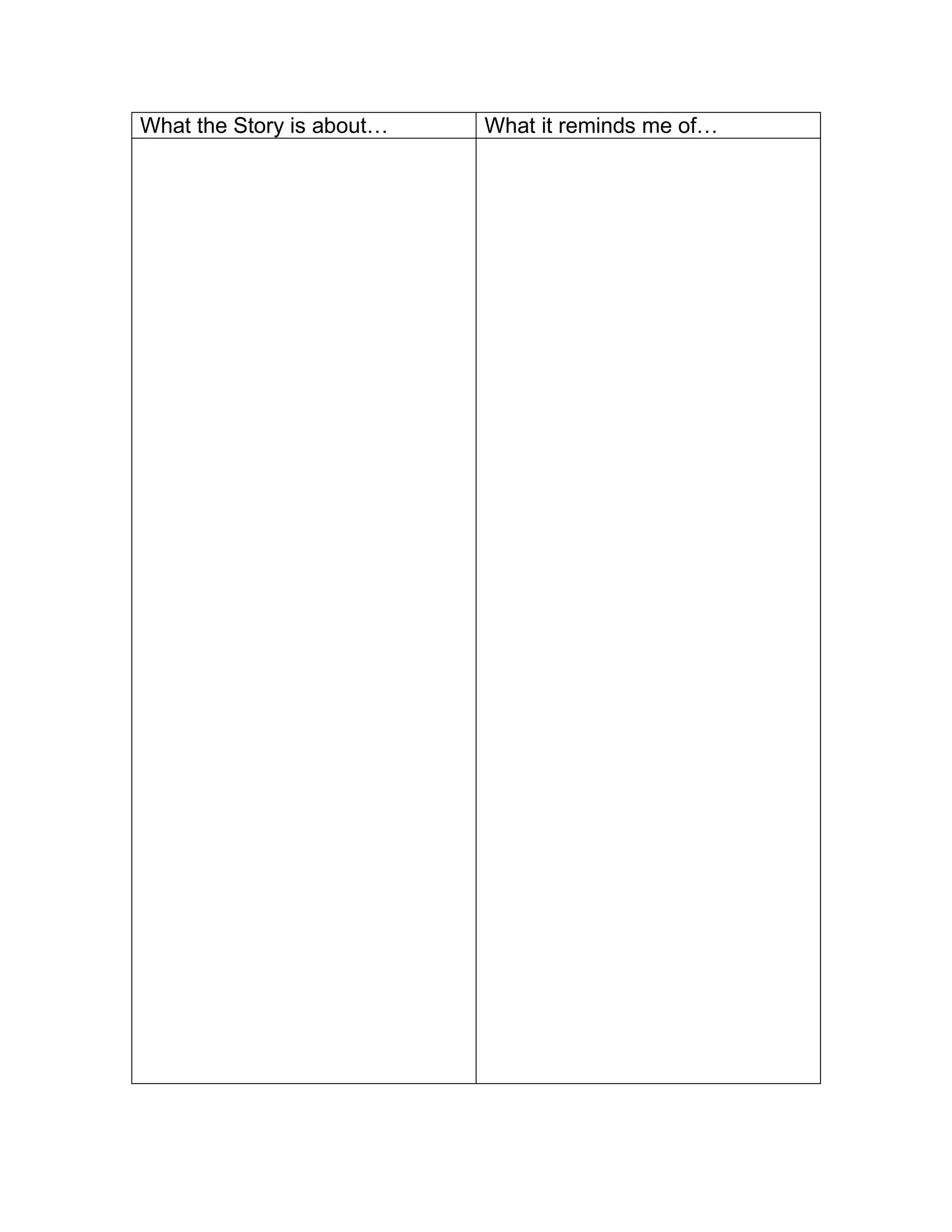
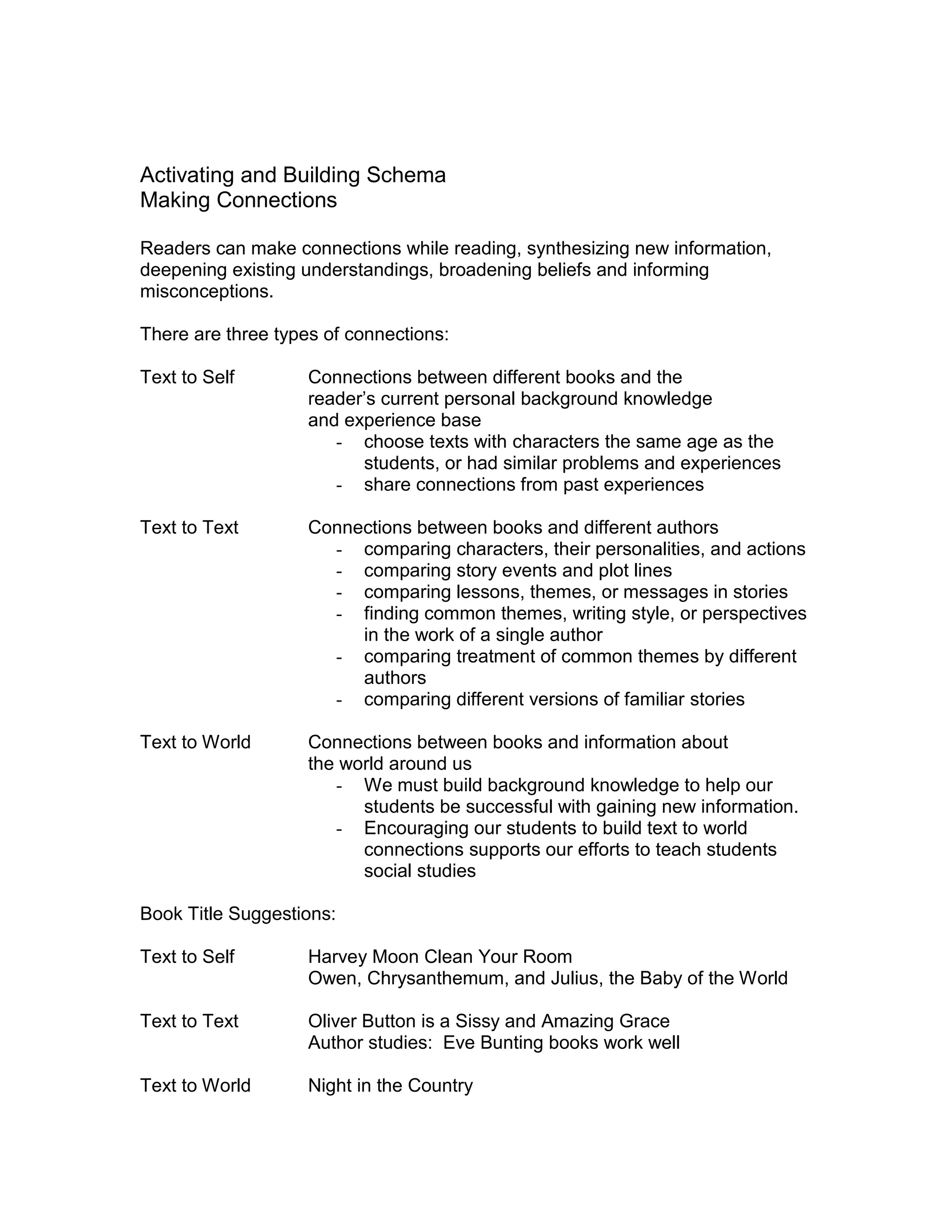
![Activating and Building Schema
Think-Alouds
This is a paraphrasing from Debbie Miller’s book, Reading With Meaning, pages
54-57.
Think Alouds are a wonderful way to show our students how to build
schema, but we must be genuine. We must be deliberate. Our think alouds
must be genuine, with precise language, with thoughtful responses.
We require proper planning. What do I want students to understand about
this strategy? Of all the places in the text where I could authentically think out
loud, which two or three would best illustrate my point? Mark those places
before your lesson, and think about what you will say and how you will say it.
Only model the point you are trying to make, don’t model another thinking
strategy during this read aloud. Be aware of your focus and keep it.
Authenticity matters. The teacher’s connections, questions, inferences,
must be genuine. That’s why book selection is key. The book won’t be perfect
for your lesson unless you can connect with it and put your personal stamp on it
in some way.
Use precise language. Be precise when you share your thinking. Say
what you need to say as clearly and concisely as you can, then move on. Use
real language and standard terminology. Define the strategy. Decide how you’ll
format your responses to the reading.
As we teach the students to think through the text we encourage the
students to respond using this terminology:
“When I read [of heard] these words… it reminded me of…”
“When I saw the picture of… it made me think about…”
Teachers should encourage the students to explain why they are thinking about
that connection. “What were the words in the story that made you think about….”
It is important for teachers to become aware of what’s going on inside their heads
as they read, to learn how to articulate their thinking for themselves and others,
and think aloud about their connections and mental images. As children’s
thinking grows, the students construct meaning, the ability to reflect on what they
read, and opportunities to share their insight.](https://image.slidesharecdn.com/schemahandoutbydebsmith-140617090706-phpapp01/75/Schema-handout-by-deb-smith-5-2048.jpg)
